What The STRUCK is Against the Storm?
(My BRUTALLY Honest Review/Impressions of the game after playing it for a while. A hidden gem & sleeper hit waiting to happen. Roguelite City building is the fun I never knew I liked! )
♦ ◊ ♦ ◊ ♦
Against the Storm launches As Early Access for Steam & GoG on November 1st, 2022 for PC. While it has already been in Early Access on the Epic Store [creator link] since last year. After playing the game for a while I’m ready to share my Early Access Impressions/Review and explain “What The STRUCK is Against the Storm?“. This is both a review & a basic guide as 2-in-1 combo.
I’ll be brutally honest and some of the things I say may not be nice but my overall impression of the game is: that it’s a hidden gem & a sleeper hit waiting to happen. I never knew that Roguelite City building could be this fun. I really enjoyed playing the game and loved how the devs have blended roguelite and city building elements to keep things fresh with each run. There is a decent chunk of micro-management BUT many things are automated and you only set them up once, including priorities for production recipes and what resources each recipe should use and not use.
This post could end up getting expanded and updated eventually but, hopefully, for now it includes enough information to serve as a basic guide on top of a Early Access Impressions article.
Video Version:
The Story:

A Roguelite city builder set in a fantasy world where the raining never stops. You are the Queen’s viceroy — a pioneer sent into the wilds and tasked with establishing and managing new settlements inhabited by Humans, Lizardfolk, Beavers, and Harpies.
Your goal is surviving long enough while gathering various valuable resources that are needed to rebuild and upgrade the Smoldering City. That city is the only safe haven against the Blightstorm — a cycle of destruction that ravishes everything in its path, leaving devastation. Only the ones who have what it takes can overcome the Storm.
Key Features – a Summary:
Below is a list of the game’s key features to expect:
- Metaprogression system
- Deck Building
- 4 Different Species
- Perk System
- Dungeon Keeper-like exploration
- Ruins & Rebuilding
- Renown System
- Production Networks.
Permanent VS Temporary Progress:
Your settlements leave a permanent mark on the overworld map, which gives players access to new building blueprints, quests, perks and starting conditions. This the devs refer to as “metaprogression system” and is the bread and butter of the game that keep us playing.
“Just one more run!” is a phrase I never expected to associate with a city builder game.
Each settlement ‘run’ will reward you with citadel resources that you can use for permanent upgrades in the Smoldering, conveniently simply called “Upgrades”. And while a settlement run may be temporary, each previous run will make your next one easier and more enjoyable thanks to the permanent unlocks you will get after it.
The Settlements:
Every settlement “Run” you do will feel unique and make you adapt to the various glades that surround your starting ‘hub’, while expanding accordingly to make new ‘hubs’. What resources will there be in the neighboring glades? Will there be any nasty surprises I can not handle in that one dangerous glade nearby? Should I avoid the “gamble” and not open up any dangerous glades to play it safe? Question like those are what I felt thinking to myself while playing. Every settlement will require a different approach and you may not always have all the resources you want so you better make use of the ‘lemons’ you’re given to make the best ‘lemonade’ possible each run.
Creating Settlements feels fun and the Quality of Life for an Early Access game is amazing. At first, players don’t have access to to many building blueprints and that seems like a good thing, especially so for people who may not have much experience with city builders. I understand that some city builder veterans may be put off by this and feel like there isn’t much to do at first but eventually after a few runs you’ll be unlocking more and more blueprints and get access to a wide array of building to use for your city-building endeavors.
The Buildings:
There are a few major categories of structures/buildings in the game:
- Roads/Paths – Paved roads, Simple muddy paths, etc.
- Camps – Woodcutter, Stonecutter, Scavenger, Trapper & other types of camps built near resources for collection
- Food Production – Farms, Farm Fields, Smoke Houses, and other “food source” buildings
- Housing – shelters that any race can use as well as species specific housing
- Industry – process raw materials and turn them into final products or tier 2 materials for further processing
- City Buildings – expand by making new hubs of storage & hearth as well as trading posts
- Decorations – comfort, aesthetic, and harmony are the 3 types of decorations each serving a different purpose
The Deck – Blueprints, Perks, Conditions:
Players will assemble a deck of blueprints, perks, and conditions before each run. Once the run starts they will have to choose between sets of 3 blueprints of various types to “build” a starting deck. Then players will also need to pick a “cornerstone” which is like a map/run modifier for this specific settlement. This shapes the way you’ll want to approach that run to make the most out of it.
Perk System:
Perks change the way your settlement functions as you progress trough various runs you’ll see different perks that further nudge you towards playing in a certain way and shifting your focus from one type of building or resource to another.
The Exploration:
In order to survive, each settlement will need resources. This is where exploration comes. As you chop down trees, you will reach areas called glades. At first, they are covered in fog, but once you cut through the trees that block your way to them, you will uncover randomly generated resource nodes, events, caches to collect and other surprises. It’s basically a core element of the gameplay loop for a settlement’s growth and the only way to make sure you never sun out of resources.

There are also dangerous and very dangerous glades that will involve a certain amount of risk but also yield higher rewards. Events can be found in the dangerous and very dangerous glades and here’s how the game describes those:
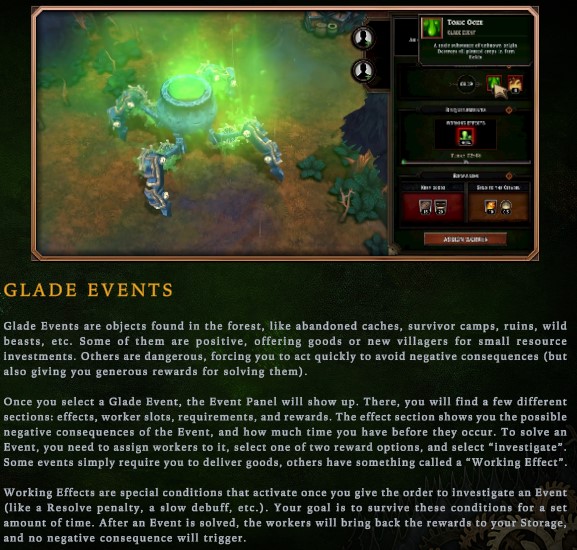
Hostility & Forest Mysteries are another set of mechanics to pay attention to:

Ruins & Rebuilding:
As I mentioned above, the Smoldering City has an “Upgrades” tab. By rebuilding the ruins in the Citadel you will be getting access to powerful technology that will make you next settlement runs easier and more fun. The 4th species (Harpies) will not be initially available, for example, and you’ll need to unlock them by building & upgrading an Obsidian Archive. The Obsidian Archive is also need to unlock the Deeds system and a series of core features, this many of its levels classify as “fundamental” upgrades. A level 8 Obsidian Archive will unlock the Daily Expeditions feature, while Factions come at lvl 7 of that building and Consumption Control at lvl 3.
The Deeds:
Deeds are kind of an achievement/milestone rewards system that further enhances the permanent progression by awarding players with Citadel Exp and unlocking new blueprints:
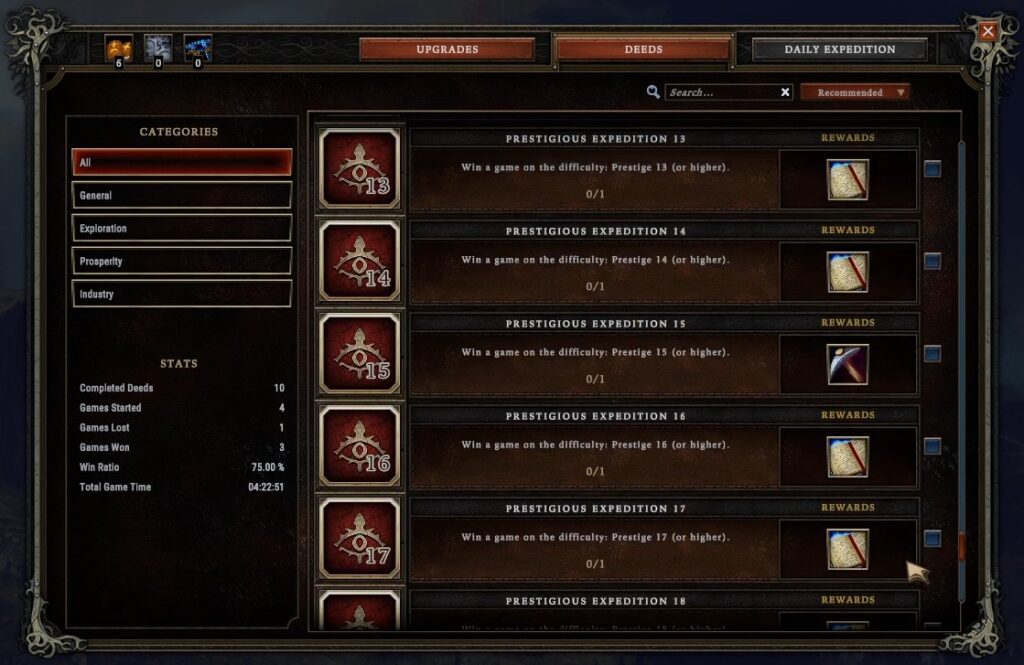
The Species:
Each of the four species of settlers has their unique features and needs:
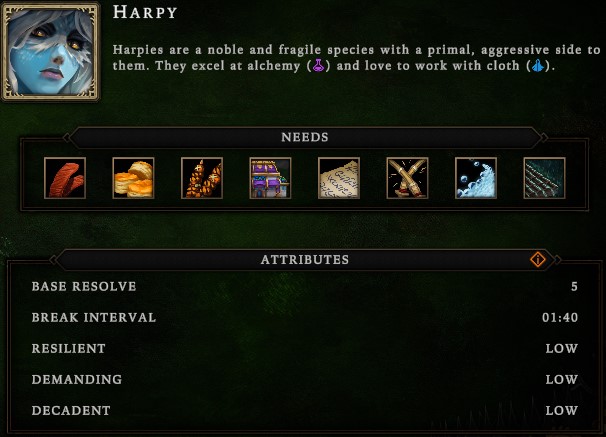



In order to keep your villagers happy and make sure they don’t leave, you’ll need to pay attention to their Resolve:
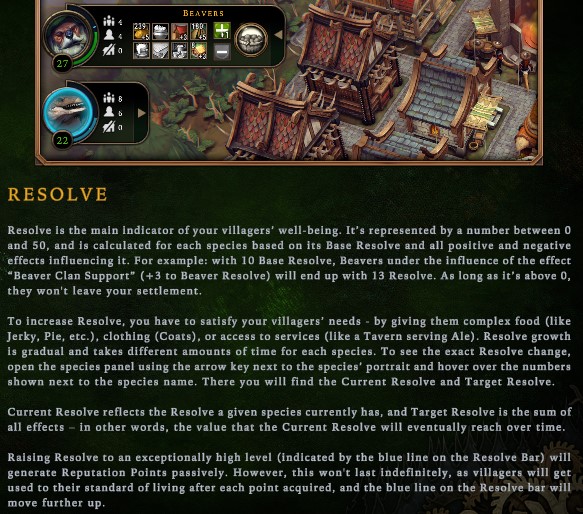
Controlling the consumption of each species is one of the earlier unlocks and it’s a great Quality of Life feature:
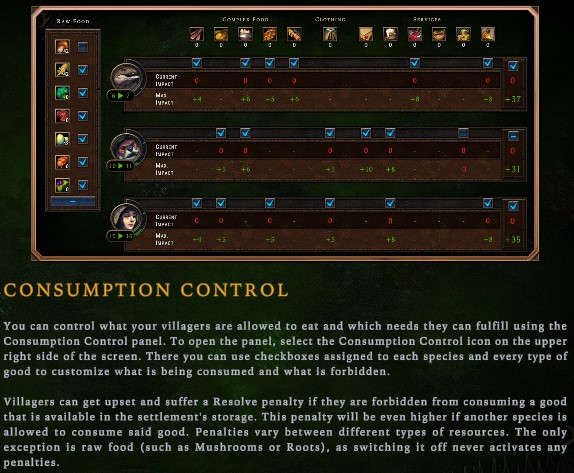
Renown System:
Winning a game/run/settlement happens trough the renown system. Here’s how the game describes it:
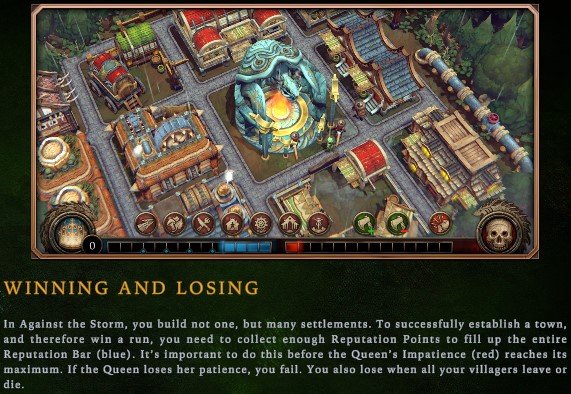
Trade Routes & Factions:
Unlocking the Factions system also unlocks trade routes. You’ll be able to replace ordinary production chains with a large network of dependencies and substitutes.
Factions:
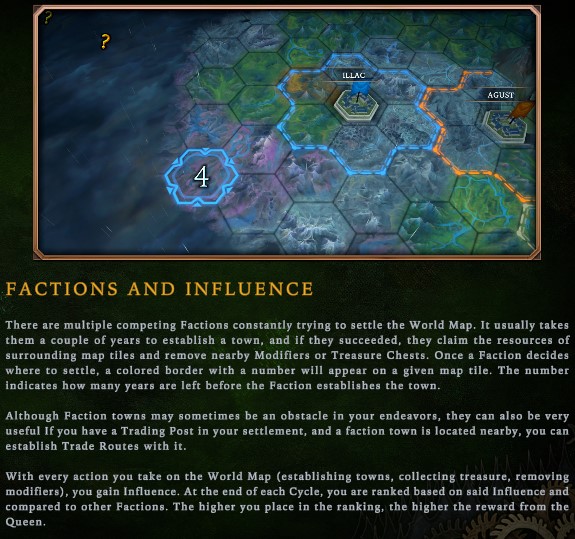
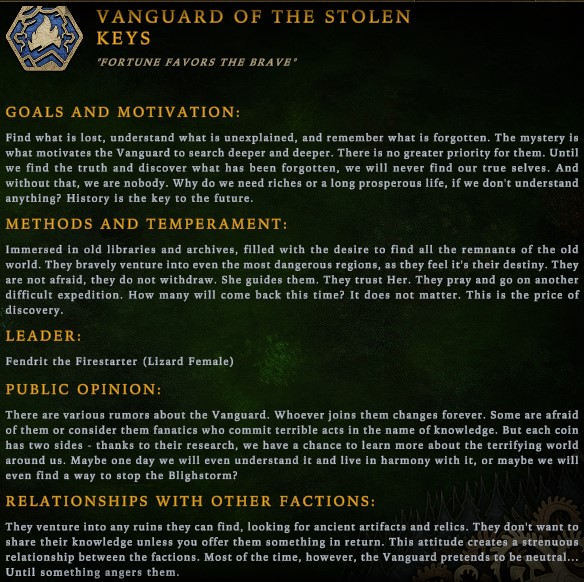
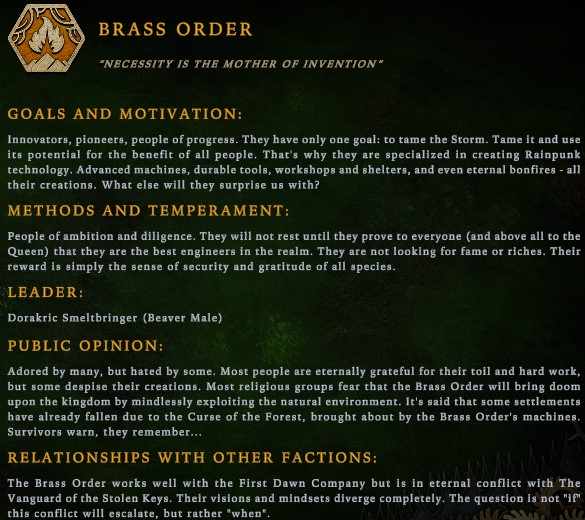
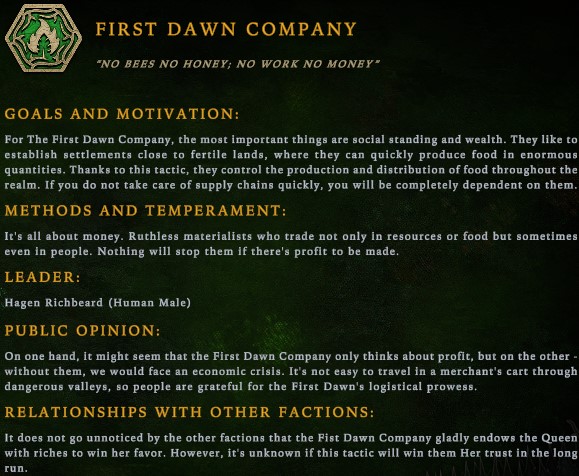
Trade Routes:
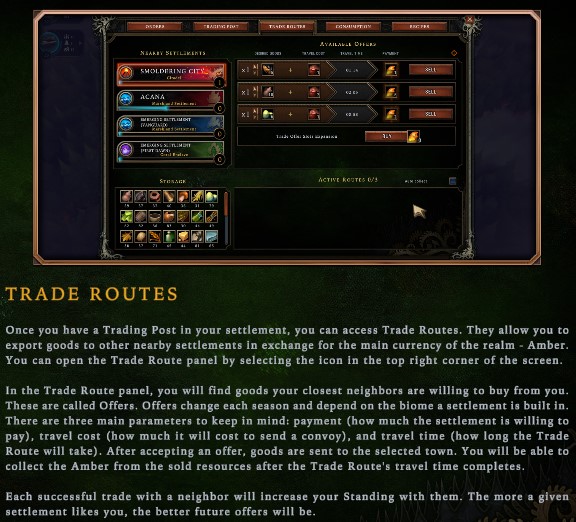
Optimization & Performance:
The game ran very smooth on my GTX 1060 6GB Nvidia GPU and that was to be expected as it’s not a graphically demanding behemoth. So rest assured that even potato GPUs can get you stable fps in the game.
PROS & CONS:
PROS
- Beautifully crafted fantasy world with handpainted textures
- A fun mix of the roguelite & city builder genres
- Decently optimized
- Lovely OST, SFX & VFX
- A HUGE variety of building waiting to be unlocked
- 4 unique species of settlers
- A solid amount of QoL such as priority for recipes or consumption control automation
- RNG done right – every run is unique and lets you unleash your creativity
- A VERY extensive in-game Codex/Wiki that would answer most of your question about how to play the game and how certain systems/mechanics work
- Great Replayability Value
CONS
- Can not visit the smoldering city UI/Menu while inside of a settlement run
- No resizing of the ‘cut trees’ marking circle
- It takes a while to get things going in regards to permanent progression
- Windowed Mode “Eats” pixels from the bottom equal to the border at the top
♦ ◊ ♦ ◊ ♦
This concludes my 2-in-1 Early Access Impressions + Basic Guide for Against the Storm. If you’re interested in the game below are links to the various platforms where one can buy it (you can just click the links to open a new tab):
Platforms
Epic Games Store (creator link = I earn profit when used to buy)


